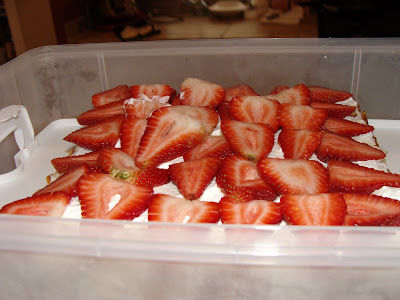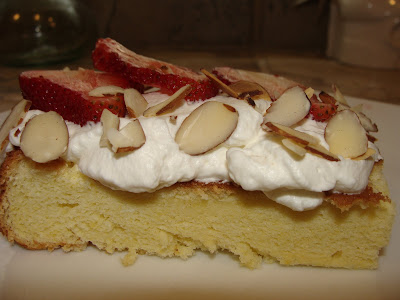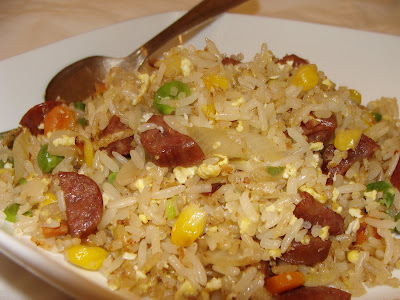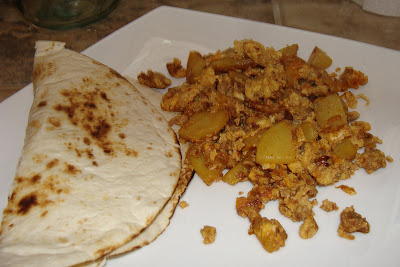
Last Thanksgiving we were invited to an intimate dinner at a former SoupGroup member's home. She had to withdraw from SoupGroup because of the new babe. She is pretty awesome. She is vegetarian but ended up cooking the turkey. Her husband (who is a proud meat eater) was in charge of the turkey, however he was called to perform emergency surgery for a dog that swallowed something...I can't remember what but it became solid in the dog's stomach and he ended up removing a mass that was a mold of the dog's stomach.
We all brought a few dishes to share. One of the dishes the hostess made was this delicious puree of sweet potatoes. I didn't make a leftover plate to take home since we were both heading out of town. The bf was on his way to see his parents and I was on my way to California for my friend's one-month baby celebration. When I returned from California, I immediately emailed her for the sweet potatoes recipe. It is quite delicious. I made it for a potluck for work and several people asked for the recipe.
- 5 pounds sweet potatoes, unpeeled
- 1/4 to 1/2 cup maple syrup
- 5 tablespoons unsalted butter, at room temperature
- 1 cup sour cream
- 1/2 teaspoon kosher salt
- 1/4 teaspoon ground nutmeg
Directions:
1. Heat oven to 375° F.
2. Pierce the sweet potatoes several times with a fork and place on a foil-lined baking sheet. Bake until softened, 1 to 1 1/2 hours, depending on size; let cool.
3. Slice each sweet potato in half lengthwise. Scoop the flesh into a saucepan and discard the skins. Add the maple syrup (to taste), butter, and sour cream. Using a wooden spoon or potato masher, mix until smooth. Season with the salt and nutmeg. Place over medium heat, stirring occasionally, until warmed through, about 5 minutes
2. Pierce the sweet potatoes several times with a fork and place on a foil-lined baking sheet. Bake until softened, 1 to 1 1/2 hours, depending on size; let cool.
3. Slice each sweet potato in half lengthwise. Scoop the flesh into a saucepan and discard the skins. Add the maple syrup (to taste), butter, and sour cream. Using a wooden spoon or potato masher, mix until smooth. Season with the salt and nutmeg. Place over medium heat, stirring occasionally, until warmed through, about 5 minutes




















































